We hope that you greatly enjoy reading this article about 3 Astounding Antarctic Whales as much as we enjoyed creating it for you. These cetaceans represent some of the most amazing creatures on earth. They’re also incredibly fascinating to learn about, for many.
Obviously, however, these few represent only a handful of the roughly 40 recognized species of whales known. These 3 Astounding Antarctic Whales serve as good examples of the group, though. We hope that learning of these gives you an urge to learn of the others.
Blue Whale
Blue Whale Facts
- Leading off this article about 3 Astounding Antarctic Whales comes the mightiest of them all, the breathtaking Blue Whale.
- This magnificent work of Nature and evolution is best known by the fully descriptive common name. Scientists, meanwhile, know it better by its technical name. That, however, is the far more difficult to pronounce term of Balaenoptera musculus.
- Regardless of which name one chooses to use to refer to it, though, one fact remains clearly undeniable. That’s the the fact that it’s an amazing species. The first known recognition of it as that separate and distinct species occurred in the year 1758.
- The renowned Swedish zoologist, Carl Linnaeus holds that distinction. Following his original work, however, researchers discovered subspecies of the cetacean. Presently, in fact, researchers recognize a total of five subspecies of the amazing mammal.
- Most unfortunately, the amazing creature now finds itself in dire straits. In the past, humans fervently hunted it almost to the point of extinction. In 1967, however, the International Whaling Commission banned any hunting of the incredible animal.
- Currently, official estimates place its global population at between 10,000 – 25,000 individuals. For this reason, the IUCN presently lists the whale as Endangered. This status is reflected in the organizations published Red List of Threatened Species.
- Although hunting of the Blue Whale remains outlawed, it still faces many threats to its existence. These include habitat degradation, ship strikes, entanglement in nets, and plastic pollution. The ongoing effects of climate change also pose a serious threat.
Blue Whale Physical Description
The visually stunning Blue Whale impresses those who view it on many levels. Sheer size isn’t its only claim to fame, of course, but is definitely its greatest. That’s because it represents the largest animal ever known to have lived in the history of the earth.
Like many mammals, though, the whale displays a moderate degree of the physiological trait of sexual dimorphism. In this specific instance, that trait manifests itself in terms of pure size. More precisely, females of the species reach a larger growth than do the males.
On average, females attain a length measuring roughly 83.5 ft (25.5 m). Sizes also vary greatly between local populations. The same females reach an average weight of about 228,000 lbs (103,419 kg). Males, meanwhile, reach slightly less impressive measurements.
The greatest confirmed length of this species, in fact, equaled an impressive 98 ft (29.9 m). Unconfirmed reports, however, actually speak of even lager whales. The greatest confirmed weight of any individual, though, equaled a colossal 380,000 lbs (172,365 kg)!
The remarkable animal develops a distinctive, long, tapering body. This appears more elongated than many of its relatives. The head develops as flat, U-shaped, and with a prominent ridge. This runs from the blowhole to the top of the upper lip of the whale.
The coloring of the aptly-named Blue Whale easily draws the eye. This typically manifests a various shades of bluish-gray dorsally. That changes, however, to slightly lighter shades underneath. Other areas, meanwhile, show a quite different pattern of coloring.
The upper sides of the body of the magnificent animal show gray with a thin white border. Its lower sides show an off-white, though. The head and tail fluke generally appear uniformly gray, and the upper parts, along with the flippers, are most commonly mottled.
- Kingdom: Animalia
- Phylum: Chordata
- Class: Mammalia
- Order: Artiodactyla
- Family: Balaenopteridae
- Genus: Balaenoptera
- Species: B. musculus
Blue Whale Distribution, Habitat, and Ecology
Explaining the habitat range of the Blue Whale isn’t a simple matter. That’s due to the existence of the locally prevalent subspecies. Between them, however, they appear across a large section of the world. Overall, therefore, the cetacean has a nearly global range.
More precisely, these include B. m. musculus in the North Atlantic and North Pacific, B. m. intermedia of the Southern Ocean. The list further includes B.m. indica, of the Northern Indian Ocean, and B. m. brevicauda, a pygmy species, in the Indian and Antarctic Oceans.
In locations with a high concentration of food, as many as 50 blue whales occur within a small area. However, it does not typically form the large, close-knit groups seen in other baleen species. Blue whales most commonly live alone or with one other individual.
Like many of its relatives, this mammal engages in seasonal migrations. It does this for many reasons. These include reducing parasites and competition. These further include such other factors as increasing access to prey, thermoregulation, and protecting the young.
As a general principle, most individuals feed almost exclusively on quantities of krill. Some specimens, though, also take small numbers of copepods. It consumes huge amounts, as well. In point of fact, an adult blue whale can eat up to 40 million krill in a day.
The remarkable, and huge, Blue Whale, has few if any natural predators. On occasion, an Orca sometimes attacks, but rarely succeeds unless the individual is quite young or already weakened. The lifespan of this marvel of Nature is estimated to be 80 – 90 years.
Fin Whale
Fin Whale Facts
- Next up among our choices to appear in this compilation of 3 Astounding Antarctic Whales comes the fabulous animal known as the Fin Whale.
- This magnificent work of Nature and evolution also most frequently goes by its common name. It also goes by the alternate name of the common rorqual and the finback whale, though. Previously it was also known by two other unique terms.
- Those formerly used names consisted of the razorback whale and the herring whale. Scientists, however, know it by yet another term. It’s a much more difficult to pronounce term, however. That’s its technical name of Balaenoptera physalus.
- The first formal acknowledgement of the astounding creature as a separate and distinct species occurred in 1758. That official recognition additionally took place at the hands of the highly esteemed Swedish botanist and zoologist, Carl Linnaeus.
- Regrettably, like many of its brethren, humans once hunted this mammoth of the seas mercilessly. Due to the actions of humans, its population plummeted. Thankfully, though, the International Whaling Commission issued a moratorium on hunting of it.
- Following this action, its numbers slowly rebounded, though its numbers still lag far behind the original. Current estimates now place its global population at between 100,000 and 119,000. The IUCN, therefore, now lists the cetacean as Vulnerable.
- The beautiful Fin Whale still faces many threats to its existence, despite the ban. That’s because of several factors. One of those consists of the fact that Japan and Iceland have resumed hunting. It further faces the ongoing threat posed by climate change.
Fin Whale Physical Description
The breathtaking Fin Whale quite easily impresses the viewer for several undeniable reasons. The first of these, however, has to be its sheer physical size. That’s due to the fact that the whale represents the second-largest of all creatures known to currently exist.
Physical dimensions actually vary between populations in the Northern and Southern Hemispheres. Overall, however, the difference remains relatively minor. Individuals further display a moderate degree of the physiological trait of sexual dimorphism.
In its specific case, this trait manifests in terms of physical size. More precisely, females attain an average body length slightly greater than that of the males. The former average around 66 ft (20 m), while the males only attain lengths averaging about 61 ft (18.5 m).
The body weights of the genders, understandably, also differ. In the Northern Hemisphere, the longer females typically weigh 111,000 lbs (50,349 kg), but the males only average 85,000 lb (38,555 kg). In the Southern Hemisphere, both measurements are slightly greater.
Otherwise, though, the two sexes remain virtually identical in terms of general physical appearance. This visual pattern remains a complex mix, though. The underside appears an off-white in color. The upperside, meanwhile, appears grayish to brownish.
The head of the Fin Whale, though, presents a unique pattern of its own. On the left side, this appears a dark gray. The right side, though, shows a surprisingly complex pattern. This consists of various patches of contrasting light and dark gray and brown shades.
- Kingdom: Animalia
- Phylum: Chordata
- Class: Mammalia
- Order: Artiodactyla
- Family: Balaenopteridae
- Genus: Balaenoptera
- Species: B. physalis
Fin Whale Distribution, Habitat, and Ecology
One factor working in the favor of the awesome Fin Whale continues to be its habitat range. That’s because this species, like most rorquals, has a cosmopolitan distribution. In point of fact, populations appear in virtually all of the major oceans of the globe.
These include regions extending from both the North and South Poles, to all of the tropical regions. The exceptions to this range remain few, in fact. These include the zones near the ice packs at both poles. Others, though, include areas such as the Red Sea.
This wonder of Nature also displays a high degree of versatility in its habitat preferences. That’s clearly demonstrated, however, by its appearance in such wide-ranging climates. It does appear to be more common intemperate and cool waters, though.
Like many of its related species, this cetacean evolved as a filter feeder. It therefore feeds primarily on vast quantities of krill. Its diet does, however, include a smaller percentage of other prey. These include other small crustaceans, fish, and sometimes squid.
It in turn has only one known natural predator, other than mankind, of course. That’s the equally magnificent Orca. To the best knowledge of researchers, however, such attacks occur on a rare basis. When they do, it typically involves several so-called killer whales.
For the amazing Fin Whale, mating usually occurs in the Winter. The females typically give birth every 2-3 years, and to a single calf, though multiples do occur. These sometimes number as many as calves. Finally, mobile groups generally average 6-10 specimens.
Right Whale
Right Whale Facts
- The last, but certainly not least, creature listing in this article about 3 Astounding Antarctic Whales is the marvelous one known as the Right Whale.
- The term for it does not, in fact, refer to a single variety of cetacean. In point of fact, the name actually refers to a genus of three separate species of closely related baleen whales. All of them also go by the alternate name of the black whale.
- The genus further consists of the North Atlantic Right Whale, the North Pacific Right Whale, and the Southern Right Whale. Their technical names, though, consist of the E. glacialis, the E. japonica, and the E. australis, respectively. All are amazing animals.
- Today, the North Atlantic and North Pacific species hold an unfortunate status. That’s because they remain among the most endangered whales in the world. Both species currently enjoy protection in the United States, under the Endangered Species Act.
- Due to this, legal hunting no longer occurs. Efforts to enforce the ban continue to be mounted. Sadly, this protection may not be enough. Due to their scant numbers, and numerous threats, the IUCN lists both populations as Critically Endangered.
- illegal whaling isn’t the only danger faced by the awesome Right Whale, however. Other perils now pose threats to their existence. Accidental entanglement in commercial fishing nets remains a danger. Another hazard it now faces, though, is climate change.
Right Whale Physical Description
The astounding Right Whale easily impresses anyone who encounters the creature in the open ocean. It does this, however, for several reasons. One of those, quite understandably, is its sheer size. That’s because it’s one of the largest animals to ever roam the earth.
This holds true for all three of the species within the impressive genus. Each of the different varieties achieves approximately the same physical size. They further share the physiological characteristic of sexual dimorphism, much like many of their related species do.
In this instance, also like similar animals, this manifests itself in terms of sheer physical size. More specifically, the females typically achieve a greater length than the males. The total difference, though, isn’t generally enough to be noticed by the casual observer.
Overall, the Right Whale attains an average body length of 36 – 59 ft (11 – 18 m). These further reach an average weight ranging from 120,000 – 160,000 lbs (54,431 – 72,475 kg). The majority of individuals, however, do not exceed 52 ft (16 m) in total length.
All members of this genus display a thick, almost rotund body shape. Each also displays V-shaped blowholes, skin colored from dark gray to black. The most distinctive feature, however, is the presence of rough patches on the head. These appear as white in color.
- Kingdom: Animalia
- Phylum: Chordata
- Class: Mammalia
- Order: Artiodactyla
- Family: Balaenidae
- Genus: Eubalena
Right Whale Distribution, Habitat, and Ecology
Between them, the different types of Right Whale inhabit a total of three specific regions of the globe. One solely inhabits the western Atlantic Ocean. Yet another lives only in the North Atlantic Ocean. The other only appears in portions of the North Pacific.
In each of these various regions, though, these mighty cetaceans have precise climatic requirements for their habitat range. That’s due to the simple fact that none of them can tolerate extremes of temperature. All known groups, therefore, inhabit moderate climates.
The remarkable genus displays even more specific requirements. Distinctively, each of the separate groups evolved differing needs in this regard. In the Northern Hemisphere it tends to avoid open waters and stay close to peninsulas and bays and on continental shelves.
In the Southern Hemisphere, those needs are quite different, as well as variable. There, the great majority of specimens of this animal usually live and feed far offshore in summer. A significant portion of the population occurs in nearshore waters in winter, though.
The magnificent creature possesses a diet similar to most whales. The amazing mammal therefore feeds mainly on copepods, but also consumes krill and pteropods. Individuals frequently forage the surface, underwater or even on the ocean bottom for their food.
Quite sadly, the fabulous Right Whale used to be a preferred target for whalers. This was partly due to its docile nature, the slow surface-skimming feeding behavior, and the tendency to stay close to the coast. But its high blubber content also made it a prime target.
3 Astounding Antarctic Whales
We sincerely hope that you have thoroughly enjoyed reading, and hopefully learning from, this article about 3 Astounding Antarctic Whales. We further hope that doing so inspired to you to read more about many of their relatives found throughout the world.
Sadly, though, many of these marvels of nature now find themselves in great peril. Various factors, both natural and artificial, now threaten many of them. It’s up to each and every one of us to do all that we can to protect and preserve these living wonders.
Check out our other articles on 4 Fabulous Central American Trees, Earth’s Many Magical Moths, 3 Magnificent North American Eagles, 6 Geological Wonders of India
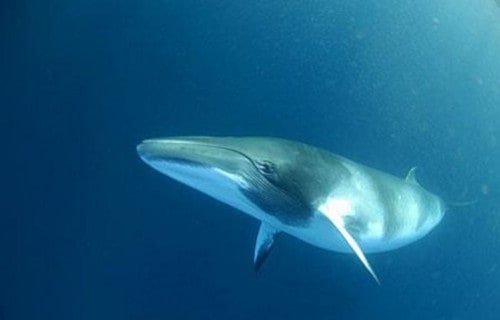
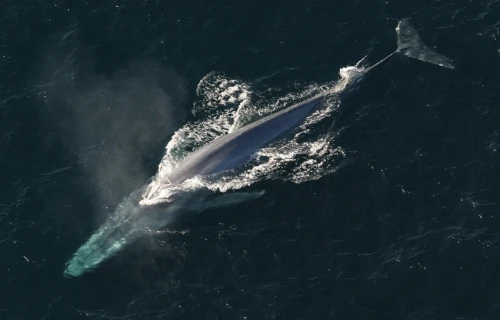
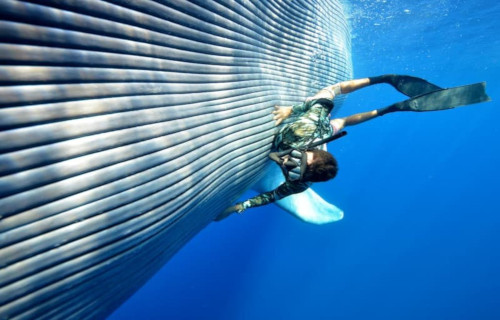

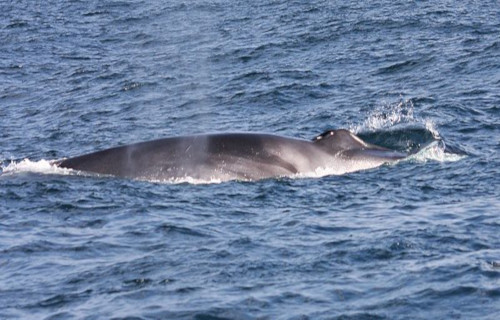
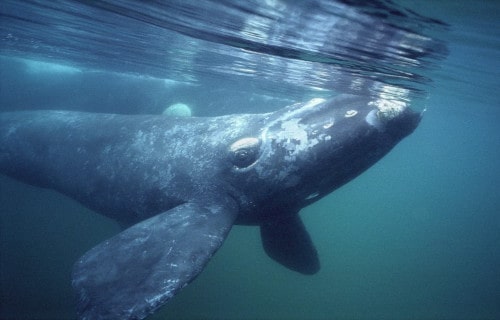
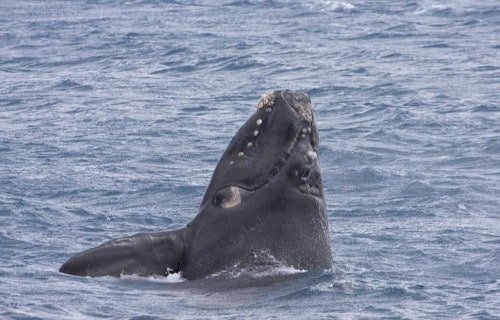
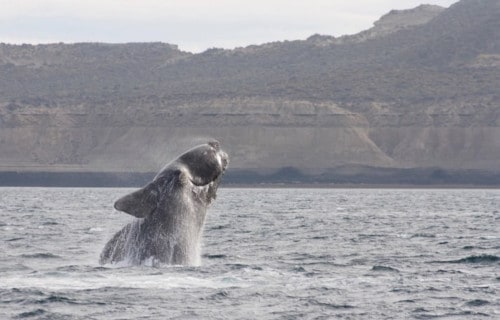









Leave a Reply